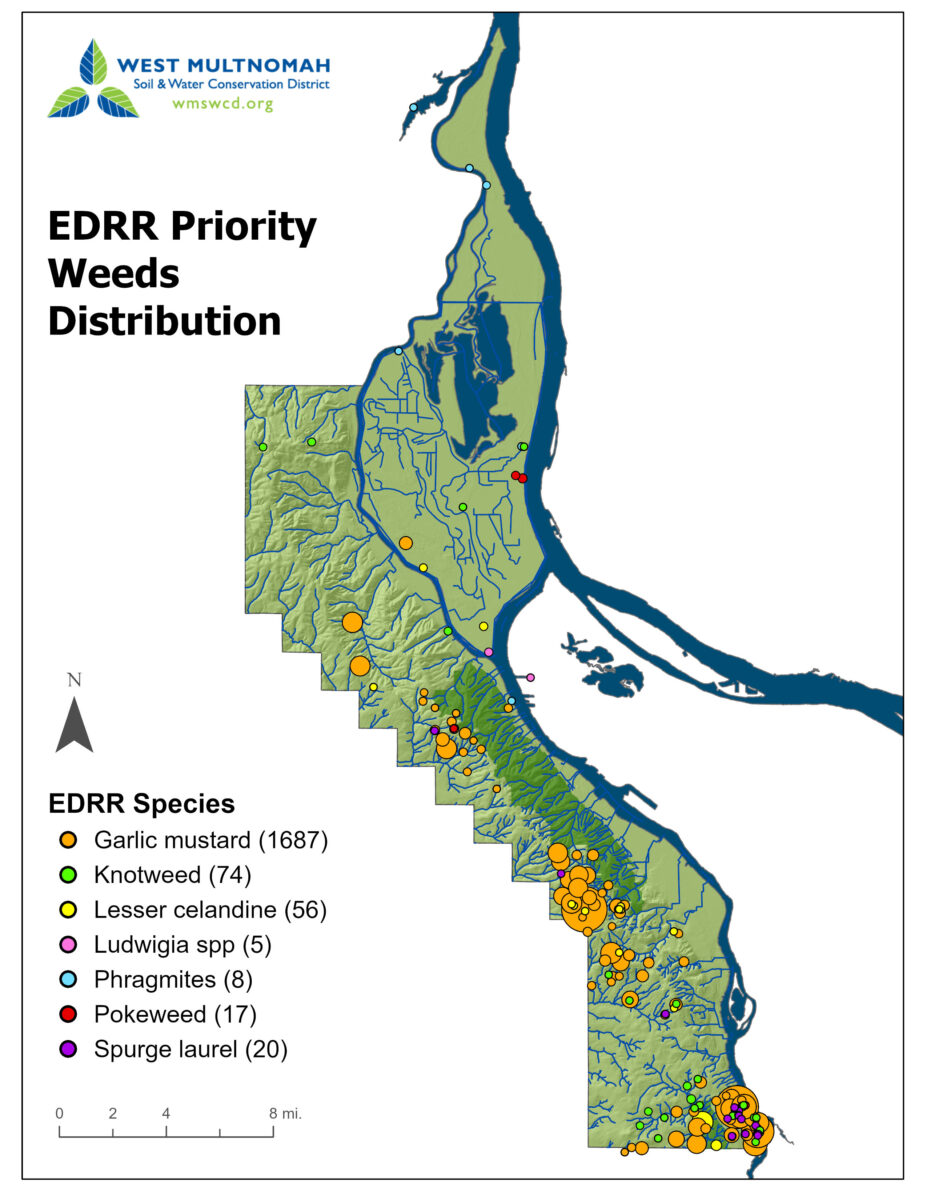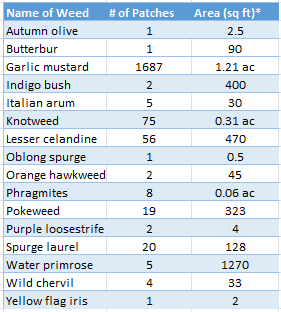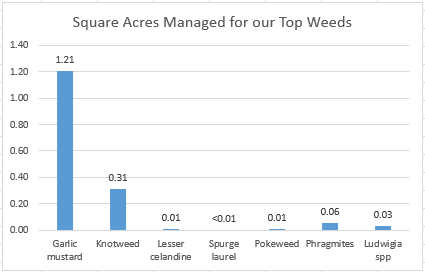by Michelle Delepine, invasive program coordinator and conservationist
Each year our early detection, rapid response (EDRR) program continues to conduct outreach and expand the geographic area surveyed for priority invasive weeds. This past year (July 2023 – June 2024) we surveyed over 3,900 acres of private land and shorelines. This all totals roughly 5% of the acreage in our District! Our surveys were conducted on private properties as well as along the shores of the Multnomah Channel and in the Linnton neighborhood of northwest Portland. We also partnered with Scappoose Bay Watershed Council to survey the entirety of Scappoose Bay from the water. On private property we were primarily looking for priority target weeds such as garlic mustard, knotweed, and spurge laurel. Along shorelines we were looking for aquatic weeds such as common reed, water primrose, and purple loosestrife.

We found sixteen different priority species from our EDRR list (see Figure 1.). Not all of these species were controlled (meaning sprayed with herbicide or manually removed) wherever found in our district. Lesser celandine, for instance, is considered an “EDRR species” on Sauvie Island, but generally not elsewhere in our district. The table below (Figure 1.) lists the weed species we found and controlled during our surveys. In all, we found just over 1.6 acres total of priority invasive species across 1,889 patches. While this may seem like a small value in comparison to the acreage we surveyed, it isn’t too surprising since we are only targeting weeds that are not yet abundant on the landscape.
Figure 1. EDRR Species Found (July 2023 – June 2024)

* Area is given as square feet unless otherwise labeled
Our top EDRR weed species include the seven species listed in Figure 2. below. Garlic mustard is one of our most targeted species. While we found 1,687 individual patches of garlic mustard (or 1.21 acres), we also returned to 837 sites that previously had garlic mustard and found none. That is due to the success of our previous control measures. Additionally, we controlled 75 patches of knotweed (or 0.31 acres) and 19 patches of common reed (or 0.06 acres). In the coming year we will continue to look for and control priority weeds found in our EDRR list.

Figure 2. Total area of priority weed species controlled for our top target weeds
We give special thanks to the Oregon State Weed Board (OSWB) grant program which partially funds our garlic mustard effort, along with the efforts of several partners across the Portland area. This past year we were awarded $53,910 in funding from the OSWB grant program to support this ongoing, important work to contain and decrease the presence of garlic mustard in Portland to prevent the spread of garlic mustard to areas outside the Metro area.